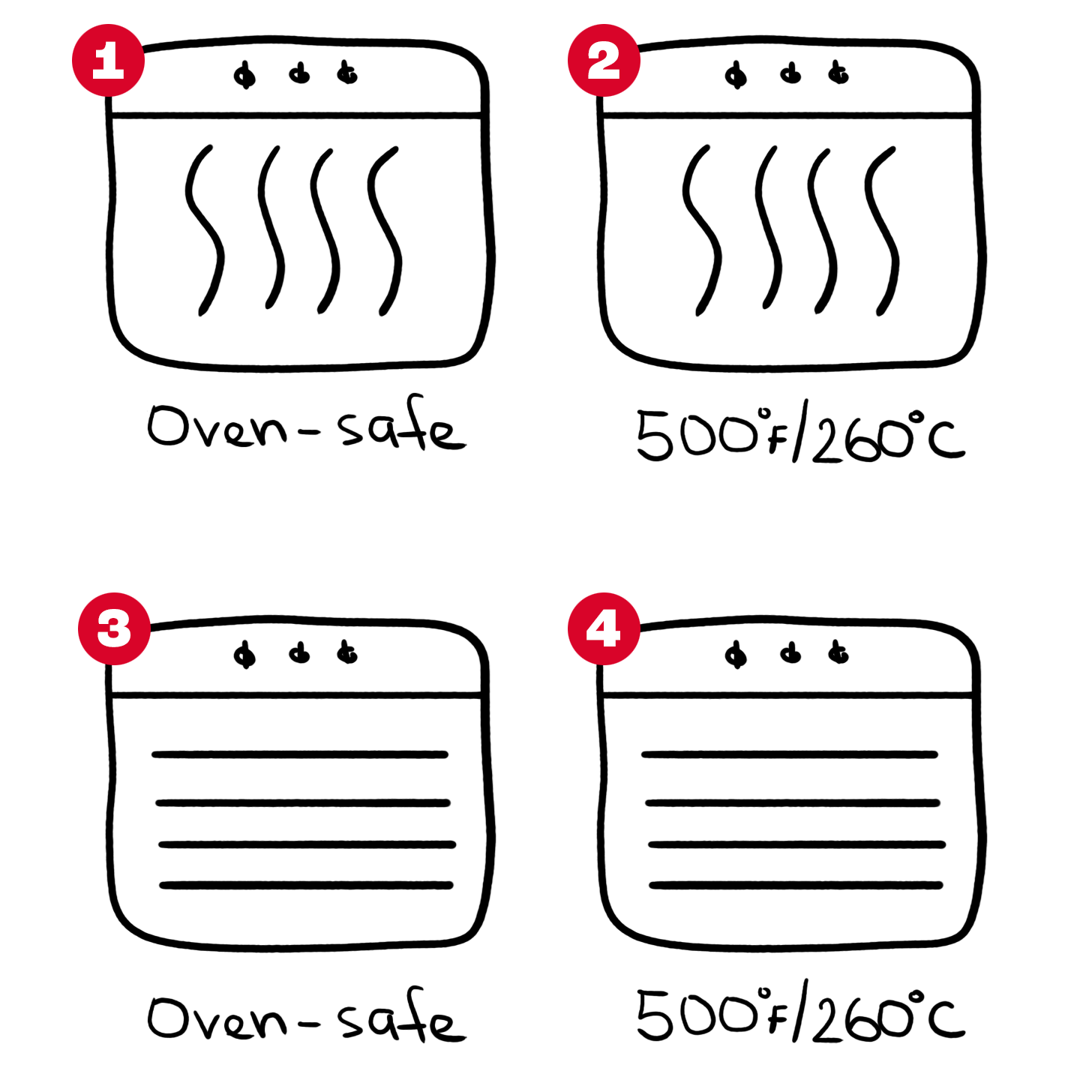Taking your induction cookware from stovetop to oven might be tempting for a one-pot meal. But is it safe? Let’s find out.
Induction cookware, with its physics-laden principles, can seem mysterious. At its core, induction cooktops use electromagnetic waves to heat pans and pots from the inside out.
The catch? The cookware must contain enough iron for a magnet to stick to it. Hence, materials like cast iron, carbon steel, and stainless steel are induction cooktop compatible by default.
But here’s the burning question: Can induction cookware also withstand the heat of an oven?
Can You Put Induction Cookware in the Oven?
Not every induction-friendly pan or pot is designed for use in the oven.
Just because a pot or pan works on an induction cooktop, it doesn’t automatically mean it’s oven-safe. It could be coated with non-stick, have plastic or wood handles, or a lid that’s not supposed to go in the oven.
Here’s one thing not everyone gets about oven-safe cookware, whether it’s induction-friendly or not: Even if a pot or pan can safely go in the oven, that doesn’t mean it can withstand any temperature.
For instance, non-stick pans should not be heated above 500°F (260°C); otherwise, they can outgas with toxic fumes. Similarly, many stainless steel pans can handle temperatures only up to 550-600°F (290-315°C) before they begin to deform.
How to Tell If Your Induction Pans And Pots Are Oven-Safe
If you’ve read this far, you know that not all induction cookware can be used in the oven.
But as helpful as that information is, you might be wondering: how exactly does this help you? How can you tell if your induction-friendly pans and pots can move freely from stovetop to oven, and back?
Fortunately, there is a way or two to check.
Refer to the owner’s manual for the manufacturer’s instructions:
It might seem like a no-brainer, but many folks overlook it: check the owner’s manual. Manufacturers clearly state if your cookware is oven-safe and the maximum temperature it can withstand.
Lost your manual? No worries! Search online using the cookware’s make and model, or try “MAKE MODEL owner’s manual.” Many websites archive these manuals and offer free access, usually with some ads on the page. (A necessary evil… right?)
Inspect the bottom of your cookware for symbols:
Flip the cookware upside down. Look for symbols on the bottom. Do you see one that resembles a range? This means it’s oven-safe. If there’s a temperature next to—or below—the symbol, that’s the highest heat it can handle in the oven.
Here’s what these usually look like:

If there’s a symbol but no temperature mentioned? Play it safe and don’t heat the cookware above 500°F (260°C). And to be extra cautious, use it without its lid, especially if it’s glass—even if the glass is tempered (the handle or lining might overheat and melt or cause the glass to break).
Using Your Induction Cookware in the Oven
For holding hot pans and pots, skip the oven mitts and grab a dry kitchen towel instead. Fold it a couple of times and wrap it around your hand for a secure grip. This is how professional chefs handle their cookware—it’s more convenient than using oven mitts.
Many recipes advise preheating the oven. To avoid warping, think about placing your pot or pan in the oven while it’s still cold and letting it heat up with the oven.
This way, you’re not placing cold cookware into a preheated oven. The trade-off is that once the oven is hot, you will need to quickly open the oven door and add your food to the (hot) pot or pan to avoid losing too much heat.
After taking the pot or pan off the heat, do not set it on a cold surface, like a stone countertop or wooden cutting board, as this can cause it to warp. Instead, place it on a cooling rack and give it the time it needs to cool down gradually.
For the same reasons, never pour cold water over a hot pot or pan. The sudden temperature change, also known as a “thermal shock,” can cause it to warp almost instantly.
Tying It All Together
Some induction pans and pots can go in the oven, and others can’t. When in doubt, refer to the manufacturer’s instructions in the owner’s manual, or look for the oven symbol on the bottom of your cooking vessel.
Remember to handle the cookware carefully—it will get very, very hot in the oven—and avoid subjecting it to sudden temperature changes.

